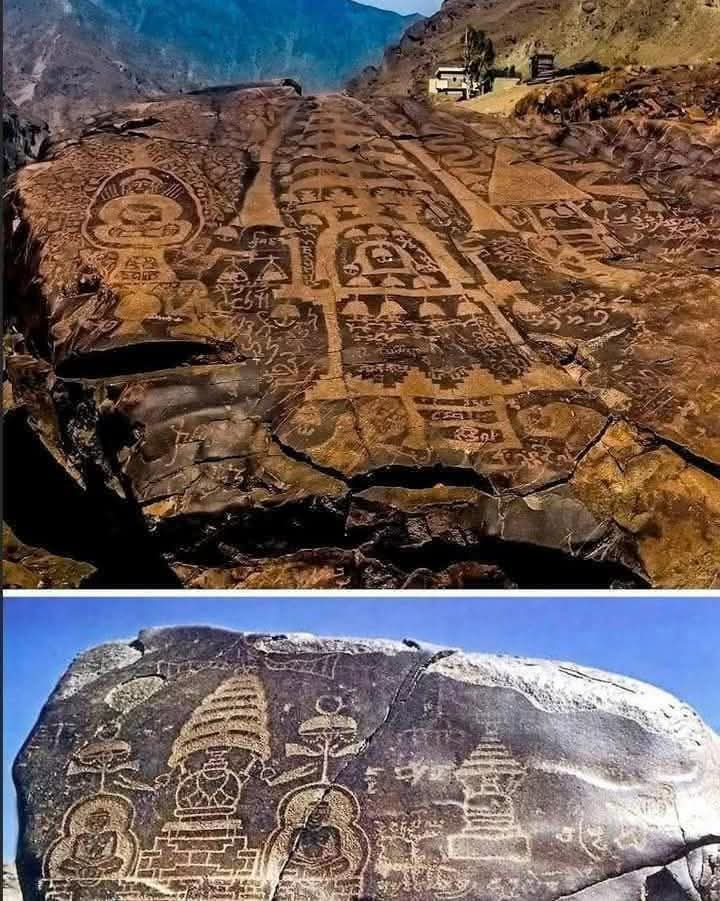1. A Hidden Gem of Prehistoric Art in the Mountains of Pakistan-Occupied Jammu and Kashmir
Nestled in the rugged terrain of Pakistan-Occupied Jammu and Kashmir, a stunning outdoor gallery of prehistoric rock art stretches nearly 100 kilometers between Shatial and Raikot Bridge. This remarkable site boasts over 50,000 rock carvings and 5,000 inscriptions, dating from the 9th century BCE to the 16th century CE.
These artifacts provide a rare window into the diverse cultures and religions that flourished in this region over millennia.The carvings depict scenes of daily life, hunting, and spiritual practices, with symbols representing various religious traditions, including Jainism, Buddhism, and Hinduism.
Of particular interest are the Jain motifs, showcasing tirthankaras (spiritual teachers) and meditative postures, reflecting the widespread influence of Jain philosophy along ancient trade routes. This site highlights the region’s historical role as a cultural crossroads where merchants, pilgrims, and travelers exchanged goods and ideas.
Preservation efforts are underway to safeguard this treasure trove, which continues to fascinate historians and archaeologists worldwide.

2. Jain Legacy in the Rock Art of Shatial to Raikot Bridge
The rock art site stretching from Shatial to Raikot Bridge is not only a hub of prehistoric carvings but also a testimony to Jain history in the region. Amid depictions of Buddhist stupas and Hindu deities, the Jain influences stand out.
Carvings of meditative postures, tirthankaras, and symbolic motifs like the swastika highlight Jainism’s historical presence in the area.These artworks underscore the extensive reach of Jainism, likely spread through ancient trade routes connecting South Asia to Central Asia.
The carvings reveal a blend of spiritual traditions, suggesting peaceful coexistence among various faiths. For Jain historians, this site offers a unique perspective on the religion’s influence beyond its traditional strongholds in India.
3. Preserving the Ancient Rock Art of Pakistan-Occupied Jammu and Kashmir
The prehistoric rock carvings between Shatial and Raikot Bridge are a priceless cultural heritage at risk. These carvings, dating from 9th century BCE to the 16th century CE, narrate stories of life, trade, and spirituality in the ancient world.
The Jain depictions, alongside Buddhist and Hindu symbols, reflect the harmonious coexistence of religions along vital trade routes.However, natural erosion, human activity, and lack of awareness threaten these artworks.
Preservation initiatives are crucial to safeguard this unique outdoor gallery, which serves as a historical bridge connecting diverse traditions and cultures.This ancient treasure awaits global recognition, offering profound lessons about cultural exchange and artistic expression in the past.
